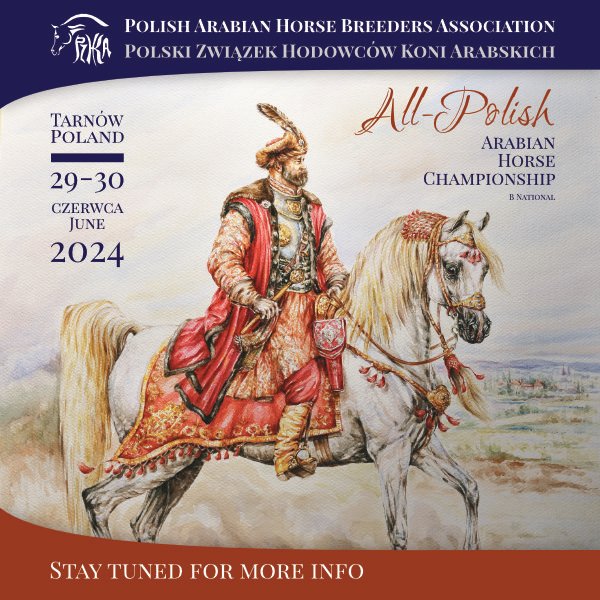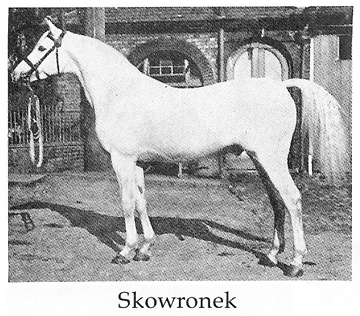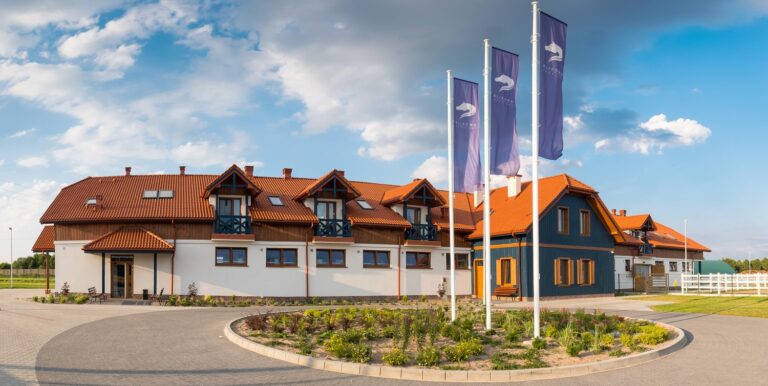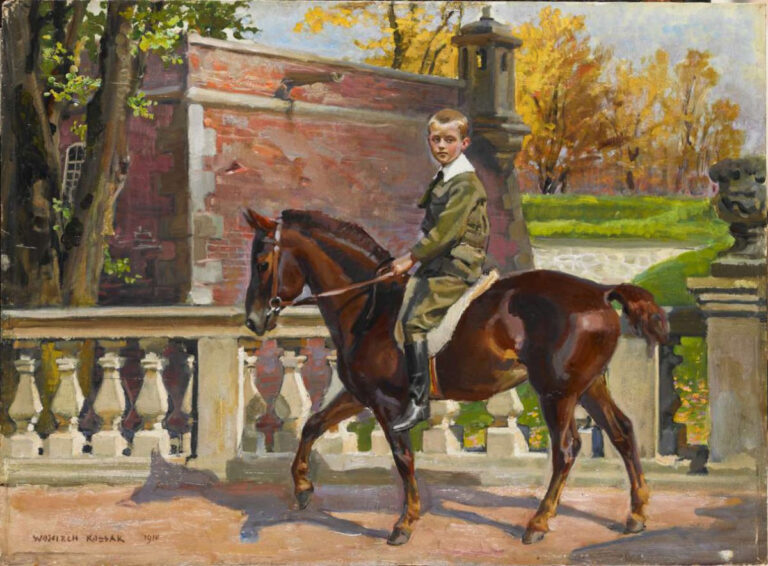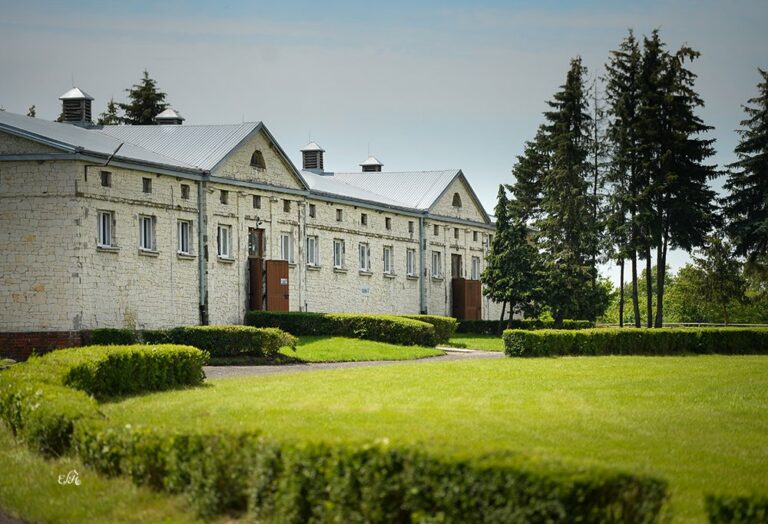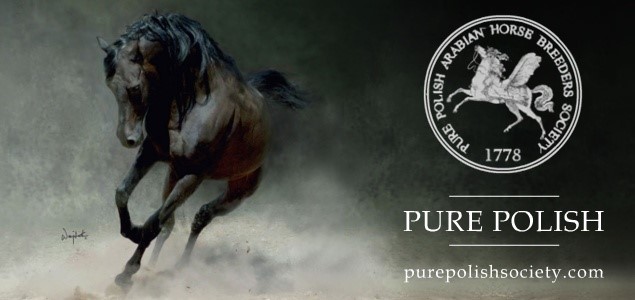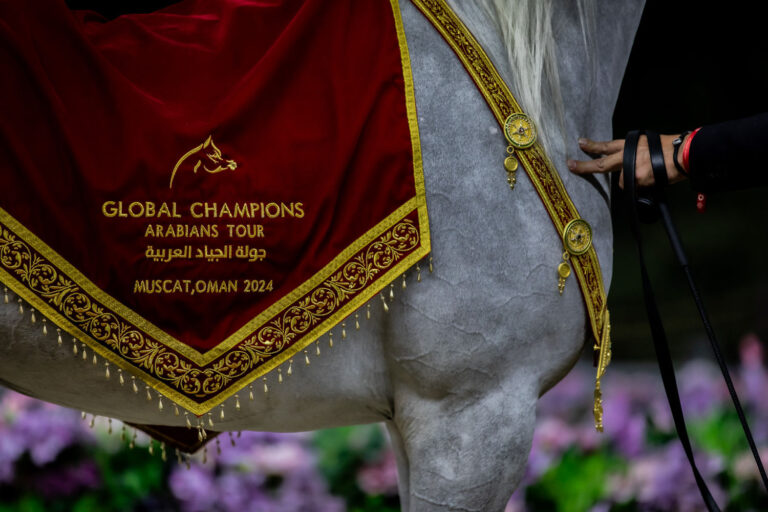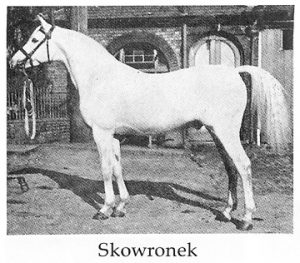
Poland’s geographical location, which is oftentimes called its curse – as if clenched in tongs between two expansive world powers, Germany and Russia – was the reason that not only did no historical cataclysm of the 20th century pass this country by, but it lay invariably in the epicenter of tragic events of the past, bloody century. World War I and Bolshevism, World War II and Nazism and lastly nearly a half century of communism – these are the three catastrophes which claimed millions of victims and for many years determined the fate of Poland and its inhabitants.
They also determined the fate of the horses, which Poland had been famous for many centuries. Arabian horses, or rather more broadly – oriental horses, had been bred here at the “bulwark of Christianity” since the 16th century. The first source to mention this dates back to 1570 (the manuscript “O świeżopach i ograch” [“On mares and stallions”] by Adam Miciński, an equerry from the stud of king Sigismund II Augustus, reigning during 1548-1572). By the 19th century Arabians were used in Polish breeding on an extremely large scale and magnate studs on the Eastern borderlands of the Republic of Poland were being established and flourished. It was mostly those studs that fell as victims to the first of the historical disasters.
The extermination which took place in the years 1917-1918 due to ideological reasons was condemned to be forgotten. After World War II Poland found itself under Soviet occupation and it was not permitted to speak about anything that would disrupt the image of the “friendly” USSR. In the epochal work of Professor Witold Pruski “Dwa wieki polskiej hodowli koni arabskich (1778-1978) i jej sukcesy na świecie “ [“Two centuries of Polish Arabian horse breeding (1778-1978) and its successes worldwide”] (1983) the chapter “Damages caused by World War I” takes up less than one page of print. Censorship allowed only for the following sentence: “When Poland regained its national sovereignty in 1918 the horses to be found on its lands were very scarce amounts from Sławuta and Antoniny, whereas nothing was left from the Biała Cerkiew and other borderland studs”. It was not permitted to mention any damages and massacres committed by the Bolshevik invaders, who plundered and destroyed everything that stood in their way. And standing in that way were the most refined and elegant herds and the best people.
We owe a literary description of the end of the borderland studs to writer Zofia Kossak-Szczucka (1889-1968), granddaughter of the painter Juliusz Kossak, one of the most outstanding Polish horse portraitists, also Arabians. As a young woman she was a witness to the annihilation of the aforementioned stud at Antoniny, once the summer residence of the princely Sanguszko family, later the seat of Prince Józef Potocki, the younger son of Maria Alfredowa Potocka of the Sanguszko line, a keen breeder, who passionately continued the work of his grandfather, Roman Sanguszko. The stud’s pride at the time was the milky-white Skowronek, son of the imported from the desert stallion Ibrahim. Skowronek’s influence on the breeding of pure blooded horses is visible until this day. Sold in 1913 to England, he became with time a chief sire at Crabbet Stud, owned by Lady Wentworth. The successes of Skowronek were described by Dr. Edward Skorkowski, the editor of the “Polish Arabian Stud Book”: “In England Skowronek worked his way up to first place in a very short time: he is becoming undefeated at exhibitions and shows where he is gaining championships. The cover of each brochure from Crabbet Park is adorned with the full of finesse and refinement head of Skowronek together with the inscription: The purest, ancient and most authentic blood from Arabia” (“Polski arab i jego wpływ na hodowlę koni w kraju i za granicą” [“The Polish Arabian and its influence on horse breeding in Poland and abroad”] (1960). Skowronek was lucky. Testimony to the terrible fate of the other horses from Antoniny is given by Kossak-Szczucka in her book “The Blaze” published in 1922, in the first years of Poland’s freedom, having regained its independence after 123 years of the Partitions period divided between Russia, Prussia and Austria (1795-1918). During that short period, until the outbreak of World War II, Polish writers could publish without having to fear censorship: “Wonder-horses were robbed, destroying the work of many years and the joy of many generations. Up to now these wonder-horses stood in the quietness of the cool stable, as though the personification of distinguished Beauty, which majestically survived the revolutions and defeats to date. Some of them still remembered the fawn and hot sand of a distant country (…). No whip touched them, no ill-word violated them (…). There stood foals from the desert, handsome like a materialized apparition of a horse from a fairy tale, marked fivefold with the fingers of Mahomet (…). There stood horses with tendons of steel, sons of wind and space, swifter than a bird, more agile than a hunted deer”. They were lost, disappeared or perished – some at once, others later, during the grueling journey: “Mothers were taken away from small, helpless foals. Several older ones ran after their dams. Their small hooves got stuck in the heavy mud and the woeful neighing spread over the fields like the cry of an orphaned child. Over a distance of several versts they fell due to weariness and their fading eyes with tremulous curiosity looked upon the crows, flying up closer and closer. The younger ones were killed by the soldiers in the courtyard so that they wouldn’t be a hindrance on the way. Then the crying-neigh of the mothers tore the heart apart”. Death of foals. Death of mares. Death of stallions. „A white stallion, gentle and sweet as a child sensed the yoke and spurned it. He stood a free horse and did not want to leave his land to be defiled. Angered by the resistance the marauding soldiers hacked him with sabers”. But perhaps it was better that he died at once. Those horses that survived the savage plunder “covered in whip marks, cursed at and kicked, un-groomed, un-watered, with a mange infection, lived in indignity and defilement. In their eyes was utter despair and the terror of a publicly affronted girl (…). They were too good and defenseless – why didn’t they have the strength to bolt and crush both the evil robber and themselves against the wall?!”.
Only twenty of the Arabians born in Antoniny survived the ravage. They were rescued by the 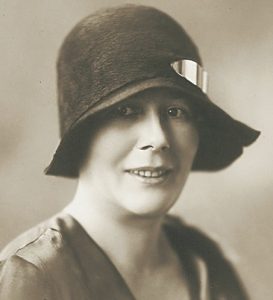
Also having survived, in scarce numbers as Professor Pruski wrote, were the horses from the distinguished Sławuta. According to the researcher of the history of Polish breeding and the author of the study “50 years of breeding pure blood Arabian Horses in Poland in their genealogical charts 1918-1968” (1972), cavalry captain Zdzisław Rozwadowski, “the oldest breeding farm of Arabian horses in Poland was Sławuta, owned by the Sanguszko princes, with its seat in Chrestówka in the Wołyń region. It was established about 1506, taking its beginnings from the Zasławski and Ostrogski herds”. It was here that in the 19th century valuable damlines were founded, including Szweykowska ca.1803, Wołoszka ca. 1810, Ukrainka ca.1815 and Milordka ca.1810. As Professor Witold Pruski claims, who describes Sławuta as “chronologically second and without a doubt the first in terms of quality stud in the Republic of Poland”, during the years 1804-1917 a total of 73 stallions and 9 mares were imported to Sławuta from the East. According to Roman Pankiewicz, the author of “Polska hodowla koni czystej krwi arabskiej 1918–1939” [„Polish breeding of pure blood Arabian horses 1918-1939”] stabled at Sławuta in 1905 were 132 dams and 10 stallions. The day of extermination came on the 1st of November, 1917. The nearly 85 year old Prince Roman Sanguszko, defending the savagely murdered horses, was killed by the Bolsheviks, which Dr. Skorkowski described in the “Stud Book”: “As if by some ill fate the famous stud at Chrestówka ceased to exist, plundered by the Bolshevik hordes in 1917. It ceased to exist together with the splendid Polish residence on the borderlands – Sławuta – upon which ruins, loyal to his land to the very end, not spared by the Bolshevik savages, perished the over 85 year old man – Prince Roman Sanguszko”. The efforts of four generations of breeders were lost in one moment.
That chronologically first stud, according to Professor Pruski – older even than Sławuta, whose beginnings are not credibly substantiated – was Biała Cerkiew, established in 1778 by the Great Crown Hetman, Count Franciszek Ksawery Branicki (1729-1819). Branicki wrote himself down in the history of the Republic of Poland rather infamously (as a participant of the Confederacy of Targowica, which was a conspiracy of Polish magnates against the progressive reforms of the Constitution of May 3rd, 1791), however he rendered great service to Polish Arabian horse breeding. In Stefan Bojanowski’s book, an author of many studies on horses, especially of the Galicia and borderland estates, „Za końmi na Wołyń i Ukrainę” [“Following the horses to Wołyń and Ukraine”] (1902), we read that in Szamrajówka, which was part of the estate of Biała Cerkiew, after 1802 the number of mares surpassed a hundred! In 1810 the filly Szamrajówka was born there, who became the foundress of one of the most valuable damlines on the world breeding stage, named today the “P” line. Biała Cerkiew is also the homeland of the stallion Ursus, a son of the purchased from the desert in 1906 Dagman Umir. Ursus, out of Hagar by Hamdani, was sold for an extremely high price (60 thousand pesetas) to Spain, to the National Stud in Jerez de la Frontera in 1912. This transaction resulted in the downfall of the Spanish government, after which for 10 years Ursus was not used at all. Sold to a private breeder for a symbolic amount of 60 pesetas he managed to serve great deeds and consolidate a superb sire line, which has endured until modern times. Also another stallion from Biała Cerkiew, Van Dyck 1898 by Vasco da Gama out of Hela by Hamdani II was sold (for 5000 roubles) to Jerez de la Frontera and established in Spain a sire line active as far as the 70s of the past century. Dr. Edward Skorkowski calculated that during 1778-1918 imported from various places of the Middle East to the Biała Cerkiew herds were 122 stallions and 15 mares, though there could even be more. An essential moment in the history of Biała Cerkiew was (in 1803) the introduction of the Stud Book (a phenomenon in those times), in which written down were the numbers of horses, pedigrees and a register of imported stallions. The book was maintained incessantly over 115 years. This priceless document was lost in 1918. Also lost were the traditions and customs of Biała Cerkiew, the grand hunts, the annual auctions attended by landowners, military stock replenishers and dealers… All this extremely rich world ceased to exist. It was in Biała Cerkiew, as Skorkowski claims, that more than sixty Arabian mares were treated with the machine gun – as “equine aristocracy”.
The stud of Juliusz Dzieduszycki in Jarczowce near Złoczowo (Małpolska region) was made famous thanks to the expeditions into the desert in search of horses. Every Polish enthusiast of the Arabian breed knows the history of importing to Jarczowce the stallion Bagdad. That event was described in 1904 by S. Bojanowski (“Sylwetki koni orientalnych i ich hodowców” [“Profiles of oriental horses and their breeders”]): “In order to make the purchase Juliusz received a full purse of ducats in gold from his father, took all of his own money and went to Lvov by carriage, drawn by a team of four horses. Having looked upon Bagdad he became so enthusiastic that he not only gave all the ducats he received from his father and those which 
Also tragic was the fate of Janów Podlaski, famous today for such horses as for example Pianissima. The history of the stud has been written down by its long-time Director Andrzej Krzyształowicz: “It was as tumultuous as the history of our country. Established in 1817 after the Congress of Vienna at the motion of the Administrative Council of the Kingdom of Poland with approval from the tsar Alexander I, it was the first State Stud on Polish territory. (…) In 1914 the horses of Janów Stud were evacuated deep within tsarist Russia and none of them ever returned to Janów”. The horses were taken to the Charkowska province – there they vanished. Entire centuries of breeding efforts were thwarted. The stud itself was so devastated as a result of military actions that in 1919 horses were placed not in Janów, but in the nearby Cieleśnica.
Roman Pankiewicz also writes about the end of Pełkinie, owned by Witold Czartoryski: „In 1914 a Russian officer came and confiscated all apart from two 2-year-old colts working over at a peasant’s farm and some foals suffering from strangles”.
„And so were lost the achievements of several generations of breeders from the years 1778-1918 and everything had to be started from the beginning” – with that Professor Pruski summed up his extremely short chapter dedicated to this period, while Dr. Skorkowski noted: „Only 10% of the pre-war stock of our Arabian breeding was saved: from over 500 broodmares of our Arabian studs – as few as 56 were registered in the 1st Section of the Polish Arabian Stud Book. These 56 mares are the foundations of the breeding of the Polish Arabian, from which this breeding will be reborn – because it cannot perish, since it produced Melpomena and Skowronek”. And that’s what happened – the breeding was reborn. However Dr. Skorkowski did not know, when he wrote these optimistic words (1926), that not fifteen years would pass when terrible times would come again…
The article has been published in the “Arabians. Horse Mag”, France/Belgium
Download the PDF version of the article – English/French»


